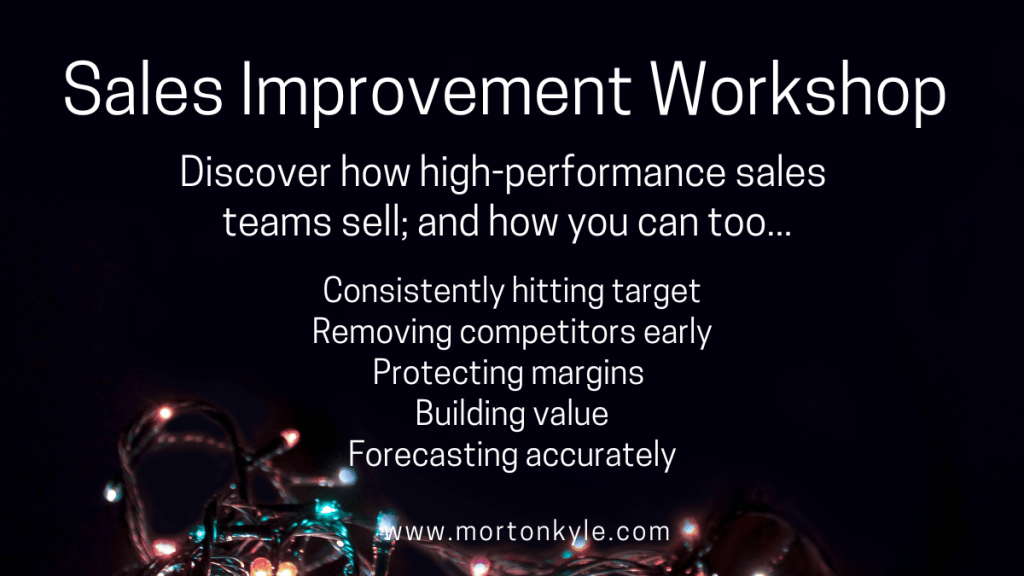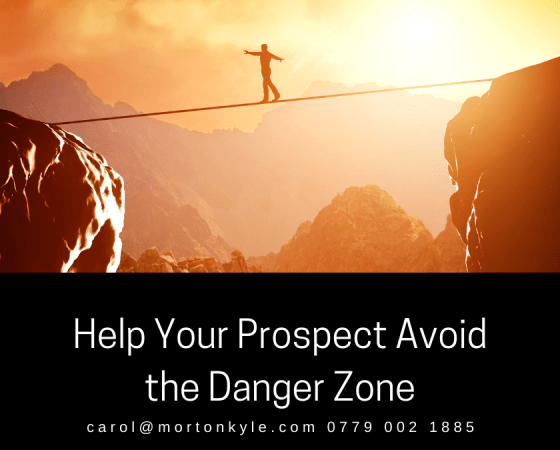How your sales reps construct their pitch matters.
Not just in terms of how they convert, what they bill, how they close or how many meetings they book…that’s not the half of it.
Selling today, more than ever, is about the buyer experience!
You might have the best product, service, case studies and insights in the world, but if the buyer doesn’t enjoy the sales process, then they’ll find a place to buy where they do. Buyers want to be educated, entertained, informed and valued before they release their precious budget…especially when competition for that budget is fierce…
Harsh isn’t it?
Doesn’t mean it’s not true though!
So, the question is…
Is Your Sales Pitch Putting Your Reps in the Danger Zone?
It’s easy to see if it is – and there are a few methods you can use to really dig into this.
Managing a sales team – as I do – I add these metrics to my weekly report to see which way the proverbial wind is blowing, and more importantly, signal if we need to revisit the basics:
Ghosting Rate
What’s your ghosting rate?
That’s the number of people that fail to take your call or respond to an email from you 1 week after they get their proposal with costs.
So, for example, I sit 10 meetings a week – 2 people have remained incommunicado despite, 2 chase calls and one email, after 7 days (the timelines might be different for you).
Based on the above, you have a ghosting rate of 20% – only you know if that’s acceptable – personally I’d want to lift the bonnet and get to grips with why it happened?
Was the prospect a dead duck to start – and got through the qualification process by accident?
Has someone been booking low level meetings just to fill the diary?
Were you quoting just to make up the numbers for the ‘got to get three quotes’ brigade?
Or has the prospect won the lottery / found nirvana / escaped the rate race in a pea green boat and gone to sea? (please delete as needed)
If you’re anything like my clients – the Ghosting rates across their team will differ wildly – so its a great sales metric to get a hold on, to start getting the outliers back in line
Deal Reforecast Numbers
This is a lovely metric – BUT – beware the first time you use it you’ll need to maybe take a long walk, find a quiet space or speak to a professional…
Here you go – look at everyone’s top 20 deals – as a group and as individuals (again the numbers might vary, instead of 20, you might want to look at 50, your call)
- Look at the time they have been in the sales pipeline since they registered as an opportunity
- Look at the average order value
- Note how many times the forecast to close date has been revised
Now – compare that to the last 20 deals that DID close:
- What was the gap between registered as an opportunity and close date
- What was the average order value
- How many times was the deal close rate reforecast before it closed
The second set of numbers are your ‘model’ performance – that’s what you’re aiming for based on current closing performance. So, now, how do the first set of numbers compare to the second set?
Here’s an example
SET 1 – 6 weeks, 5k, 8
SET 2 – 2 weeks, 4.7k, 3
Now – do you really think you’ve got a chance of closing deals that you’ve reforecast 8 times, more than 2 x the norm, who are 3x overdue compared to your current model?
No – I don’t think so either!
How to Create a Sales Pitch that Works
This easy – maybe not simple but very easy.
Here are the steps:
- Select your target sector based on what problem you can uniquely solve for this sector
- Select your perfect job title to approach – who typically has the major headache for solving the problem you can take away…
- Build you sales proposition – what is it you can do, your organisation can do, better than anyone in the world to solve this critical issue, and what proof do you have to give your solution credibility
- Think about your pitch – best practice is to keep it discovery led, and conversational, using carefully thought out questions. Your aim at this stage is not to close the deal but to find out if they have this problem that you can sell…Give some though to how you can share the great insights and experience you have on helping their competitors solve this challenge…then
- Pick up the phone – start a conversation – not with the intent to sell, but the intent to discover where this prospect is in terms of their awareness of the problem in their business, and have they quantified the extent to which this is draining them…
- Once you have that information you can decide – send them to marketing, pipeline for a call, book a meeting
We cover how to construct a full blown, high converting sales pitch in our Sales Improvement Workshop – the best sales training to give you all the confidence, skills and credibility you need to make a killer sales cold call, meeting and close

Why should you attend the Sales Improvement Workshop?
Because modern buyers want:
- Your best efforts – not a generic one size fits all sales pitch
- Insight, information, knowledge that helps them select the best solution for them
- Engagement that helps them buy without any friction, minimising risk and maximising value
And that all starts with how your build your sales pitch
10 Reasons Why You Need to Create a Sales Pitch Fit For the Modern Buyer
Here are some of the ways you know its time to look at how you create a sales pitch and engage your prospects
- You’re selling too hard, too soon, without fully understanding the buyers position. This typically leads to ghosting and a swollen sales pipeline that doesn’t move
- Your sales pitch is generic, lacking the nuanced detail required to convince the buyer you can deliver better than anyone else..
- The sales process and presentation you use is confusing, lacks flow/logic, and/or is illogical, which just confuses the buyer.
- Your solution solves some of the buyers issues and concerns but not ALL of them.
- You don’t ask for the business – because there is no natural place in your sales pitch, which means the buyer is again left confused.
- When the buyer asks a question, you act like it’s an objection and get defensive.
- You talk too much, and therefore don’t listen to what the buyer wants, simply assuming you know what he wants.
- You lack direction
- Your sales pitch is neither educational, entertaining nor challenging, and so the buyer is no better off for talking with you
- You spend your pitch defending your firms position against competitors instead of detailing your expertise in a specific niche
Any one of the above can switch your prospect from hot to cold very quickly, how about if your buyer experiences a whole handful? Imagine the impact then.
Don’t Be a Business Development Disaster | Discover How to Create a Sales Pitch to Engage, Motivate and Inform
- Take time to get to know your buyer, do your research
- Asking good quality questions is one of the key ways to make sure you and the buyer are on the same page…and stay there
- Take the buyer of a journey of exploration, challenges and insights – be a sales person of value
- Make sure you don’t start selling until you know all of the issues, concerns, challenges, buying stages, decision makers, budget, timescales and politics…
- Always ask for the business. Always, even if it’s only an in principal yes. Likewise always ask for commitment from the buyer for the next stage
- Treat all questions, objections and comments as if the buyer is asking you to help him understand. This changes your mind set, your language, your attitude, your body language and your manner. From no on there are no such things as objections, only statements that seek clarity
- You talk for no more than 20%, the buyer talks for at least 80%
- If you are going to name drop, be very very careful about the details you disclose…
- Be an expert in your industry and be an expert in what your solution can do for your buyer, in his industry to solve his specific problem
- It’s your job to create such a pitch that your buyer sees you and your firm as a highly valuable partner/asset and one without competition. Acting to defend your position against competitors tells the buyer you’re scared
How to Create a Sales Pitch | Summary
- Don’t be just like every sales person that knocks on the buyer’s door.
- Find that one thing that you can solve better than anyone else – that one big problem that keeps your buyer awake at night that you can help him with
- Have enough proof behind you that you have the skills and experience to solve this problem
- Share your insights and wisdom with the prospect
- Find a sales process that works for you and work it.
- Be an expert in your field – trusted advisor, not a sales rep
- Understand that every single customer and buyer is different – listening is your magic skill!
And, finally, the very best think you can do to help you with all of this – is join us on the Sales Improvement Workshop where we look at how to create a sales pitch that converts as well as all the in-call sales skills and techniques you’ll need to make your mark

With so much information available about how to improve sales, the best sales method, how modern buyers want to buy, what sales process to use…and with all that input then it’s often tough to know where to start if you want better sales results.
That’s why we create CLARITY from CONFUSION!
With our holistic approach to improving B2B sales performance, my clients can see an immediate uplift in sales outputs because we only focus on the elements of your sales function that are dragging your sales results down!
There is nothing hit and miss with our sales improvement interventions – whether that’s sales coaching, sales training or sales strategy.
What does that mean for you? Faster progress, less time, fewer changes, less friction, smoother transition from the old to the new.
Don’t get bogged down in out the box sales solutions and ‘hit and run’ sales training – you’re closer than you think to getting the sales results you want, you don’t need to start from scratch.
So, what’s your sales challenge?
Let’s chat!

